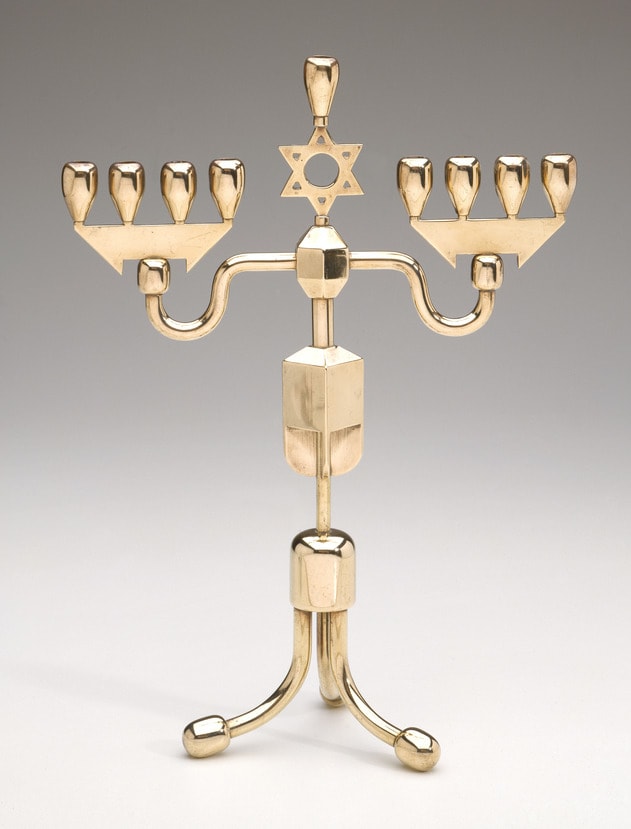
- Object Name:
- Hanukkah Lamp
- Place Made:
- United States
- Date:
- 1930s-40s
- Medium:
- Copper alloy: cast
- Dimensions:
- 11 9/16 × 8 5/8 × 3 11/16 in. (29.4 × 21.9 × 9.4 cm)
- Credit Line:
- Gift of Dr. Harry G. Friedman
- Accession Number:
- F 1725
Not On View
This playful lamp, possibly meant to simulate a human form, was made out of geometric, machinelike parts. The power of machines had captured the imagination of artists in the nineteenth century, but it was not until World War I that machines small and large came to permeate every facet of daily life, from the clock to the radio to the telephone. A true Machine Age in art and design emerged, which saw beauty in the smoke, gears, and bolts that drove the great engines, as well as in their streamlined speed and precise construction. Several different styles succeeded each other in the 1920s and 1930s, from a concentration on the angular, geometric forms of the machine parts to a focus on aerodynamic and biomorphic shapes.
This lamp appears to embody the streamlined style prevalent in the 1930s. The candleholders are shaped like teardrops, the classic aerodynamic form of the age. The teardrop was inspired by new types of planes, and found its way to all types of objects, from automobiles and pencil sharpeners to chairs. Similarly, although some of the knobs on the lamp are faceted, they are more rounded in form, in contrast to the sharp angularity of the earlier decade.
The use of screws standardized according to the inch system to assemble the parts indicates an American origin for this lamp.
This lamp appears to embody the streamlined style prevalent in the 1930s. The candleholders are shaped like teardrops, the classic aerodynamic form of the age. The teardrop was inspired by new types of planes, and found its way to all types of objects, from automobiles and pencil sharpeners to chairs. Similarly, although some of the knobs on the lamp are faceted, they are more rounded in form, in contrast to the sharp angularity of the earlier decade.
The use of screws standardized according to the inch system to assemble the parts indicates an American origin for this lamp.
Information may change as a result of ongoing research.